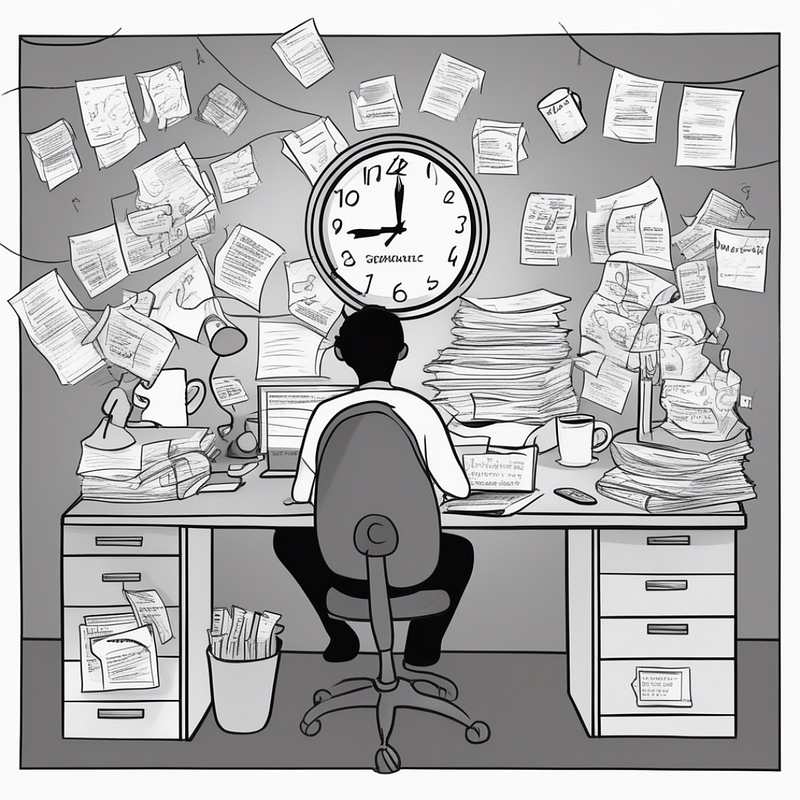My Best Processes Were Born From Burnout
“I wish I could say I started organizing my Salesforce work because I’m disciplined. That I built templates out of foresight, documented everything neatly, and followed some master productivity plan.”
The truth? I built my best systems out of survival.
Transforming Burnout into Productivity:
The Breaking Point
It was 11:23 PM on a Thursday. I was explaining the same Flow logic for the fourth time that week to the same client because I couldn’t find my notes from the previous three explanations.
My inbox had 47 unread messages. My JIRA board looked like a game of Tetris gone wrong. And I had just realized I’d been working 12-hour days for three weeks straight.
That night, I made a decision that changed everything: I was going to get organized, or I was going to quit.
The Chaos Inventory
First, I needed to understand exactly how bad things were:
Email: 847 unread messages across three accounts
Documentation: Scattered across 12 different platforms
Project status: Mostly in my head
Client communication: Reactive and defensive
Sleep schedule: What sleep schedule?
The pattern: I was working harder, not smarter. And it was unsustainable.
The First System (Born from Desperation)
Out of sheer exhaustion, I opened a Google Doc and wrote:
Client name
What they asked for
What I built
When it’s due
What could break
That document became my project tracker. Not because I’m organized because I was drowning.
What Burnout Taught Me
Lesson 1: Documentation Is a Lifeline
When you’re exhausted, memory becomes unreliable. I started writing everything down, not for future-me, but for overwhelmed-me trying to function on 4 hours of sleep.
Lesson 2: Repeatable Structure Beats Memory Every Time
I couldn’t rely on remembering the “right” questions to ask. So I wrote them down. Every discovery call followed the same checklist.
Lesson 3: “I’ll Remember” Is the Biggest Lie We Tell Ourselves
Burnout strips away the illusion that you can keep everything in your head. You can’t. Neither can I. And that’s okay.
The System That Saved Me
Project Templates (because starting from scratch every time is exhausting)
Status Updates (because “How’s it going?” emails drain energy)
Decision Logs (because explaining the same reasoning repeatedly is soul-crushing)
Handoff Documents (because 11 PM support calls are not sustainable)
A Real Before/After
Before Burnout:
Opened every client email with dread
Spent hours trying to remember context
Explained the same thing multiple times
Felt like I was always behind
After Building Systems:
Had clear processes for everything
Could hand off projects confidently
Answered questions once, thoroughly
Felt in control of my workload
The Vulnerability of Systems
Here’s what no one tells you about getting organized: it forces you to confront how chaotic you’ve been.
When I started documenting everything, I realized:
I had been making the same mistakes repeatedly
I was solving the same problems over and over
I was burning time on things that should have been routine
I was exhausted because I was inefficient, not because I was busy
The Compound Effect
Six months later, something magical happened: I had energy again.
Not because I was working less (though I was), but because I was working more intentionally. Systems gave me back the mental space to actually think strategically instead of just reacting to the next urgent thing.
Building Your Burnout Prevention System
Step 1: Track Your Time for One Week
What tasks are you repeating?
What questions are you answering multiple times?
Where do you lose time hunting for information?
Step 2: Document Your Repeatable Processes
Client onboarding checklist
Project discovery questions
Testing procedures
Handoff requirements
Step 3: Create Templates for Common Work
Status update format
Project proposal structure
Technical documentation outline
Change request process
Step 4: Build Decision Trees for Common Scenarios
When to say no to scope creep
How to prioritize competing requests
What requires stakeholder approval
When to escalate issues
The Unexpected Benefits
Better Boundaries: When you have clear processes, it’s easier to communicate expectations and limitations.
Higher Quality Work: When you’re not scrambling, you can focus on doing things right instead of just getting them done.
Easier Delegation: Systems make it possible for others to help instead of everything depending on you.
Client Confidence: Professional processes signal expertise and reliability.
The Meta Lesson
Burnout isn’t a character flaw . It’s data.
It tells you that your current approach isn’t sustainable. It forces you to question assumptions you didn’t realize you were making. It strips away everything except what actually matters.
My burnout taught me more about productivity than any time management book ever could.
If You’re Burning Out Right Now
You’re not weak. You’re not disorganized. You’re not failing.
You’re just trying to solve complex problems without adequate systems. And that’s fixable.
Start small:
Pick one repeating task and write down the steps
Create one template for your most common project type
Set up one automated status update
Document one decision you keep explaining
Remember: Structure isn’t the enemy of creativity. It’s the foundation that makes creativity possible. When you stop spending energy on chaos, you can focus on building something remarkable.
P.S.: If you’re reading this at 11 PM because you’re behind on projects and feeling overwhelmed, I see you.
I’ve been there.
It gets better.
But first, it requires admitting that working harder isn’t the solution.
Working smarter is.
About the Author:
Jeremy Carmona transitioned from journalism to Salesforce, earning 13 certifications along the way. He helps others navigate their Salesforce journey through Clear Concise Consulting.
For more insights on Salesforce careers, Salesforce strategy, and personal growth, follow me here. And remember — your story is just beginning.


